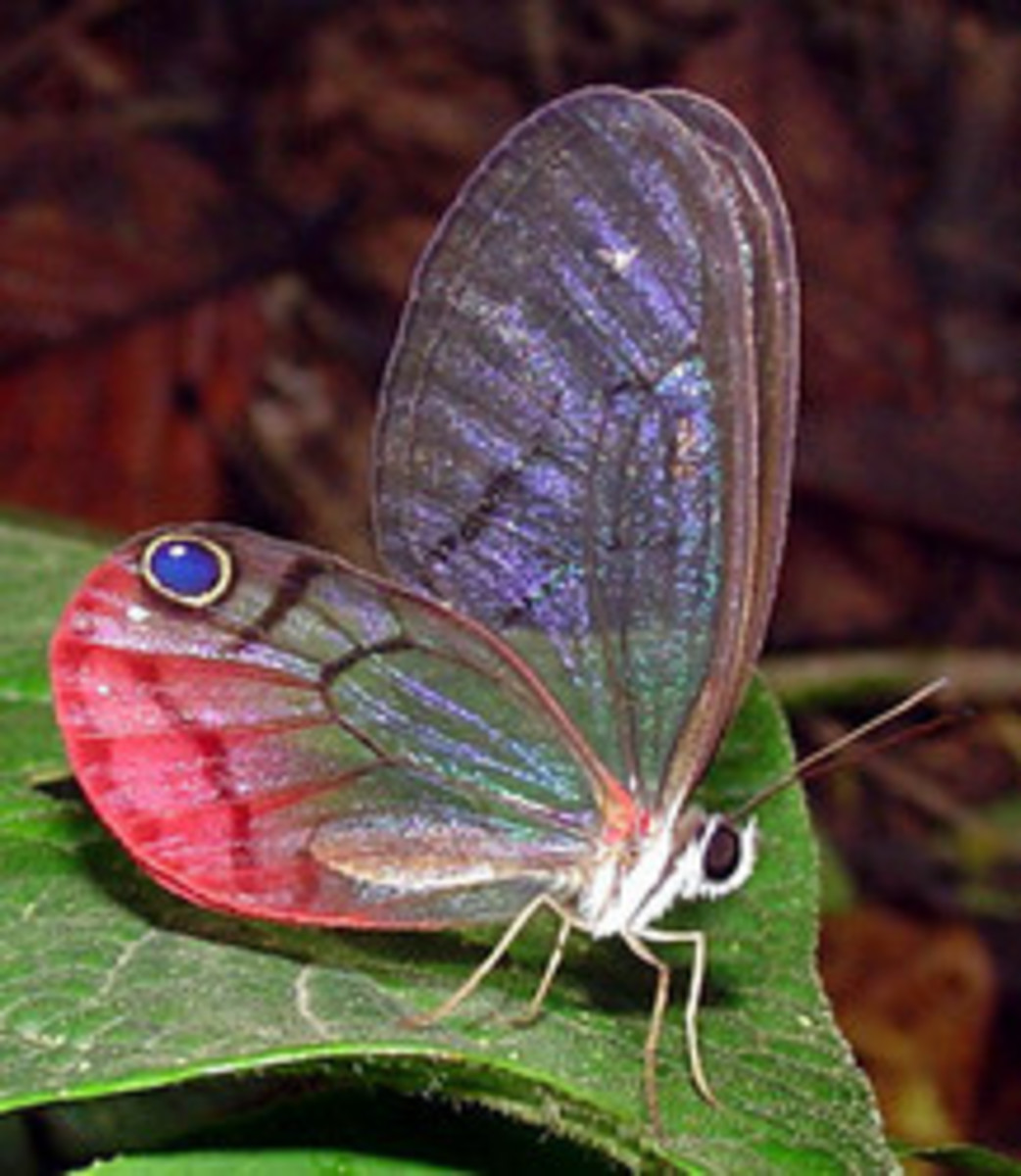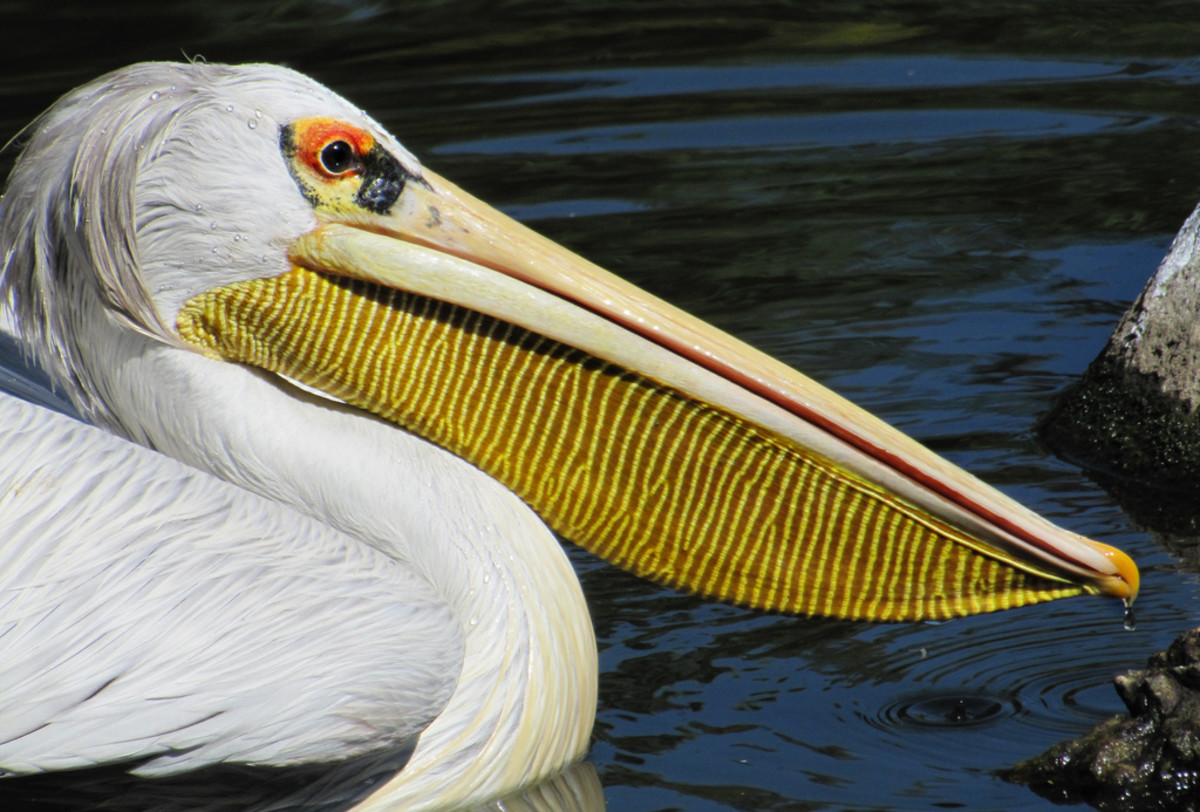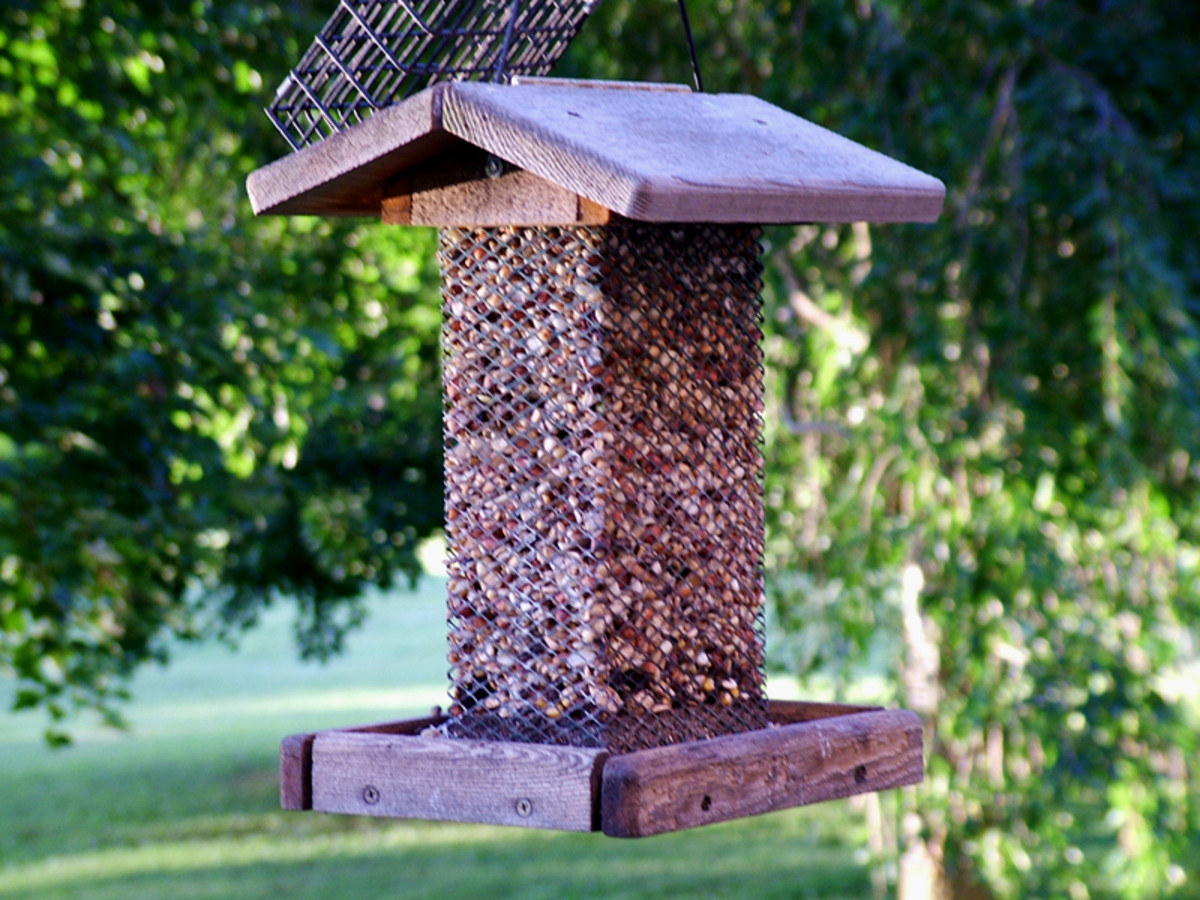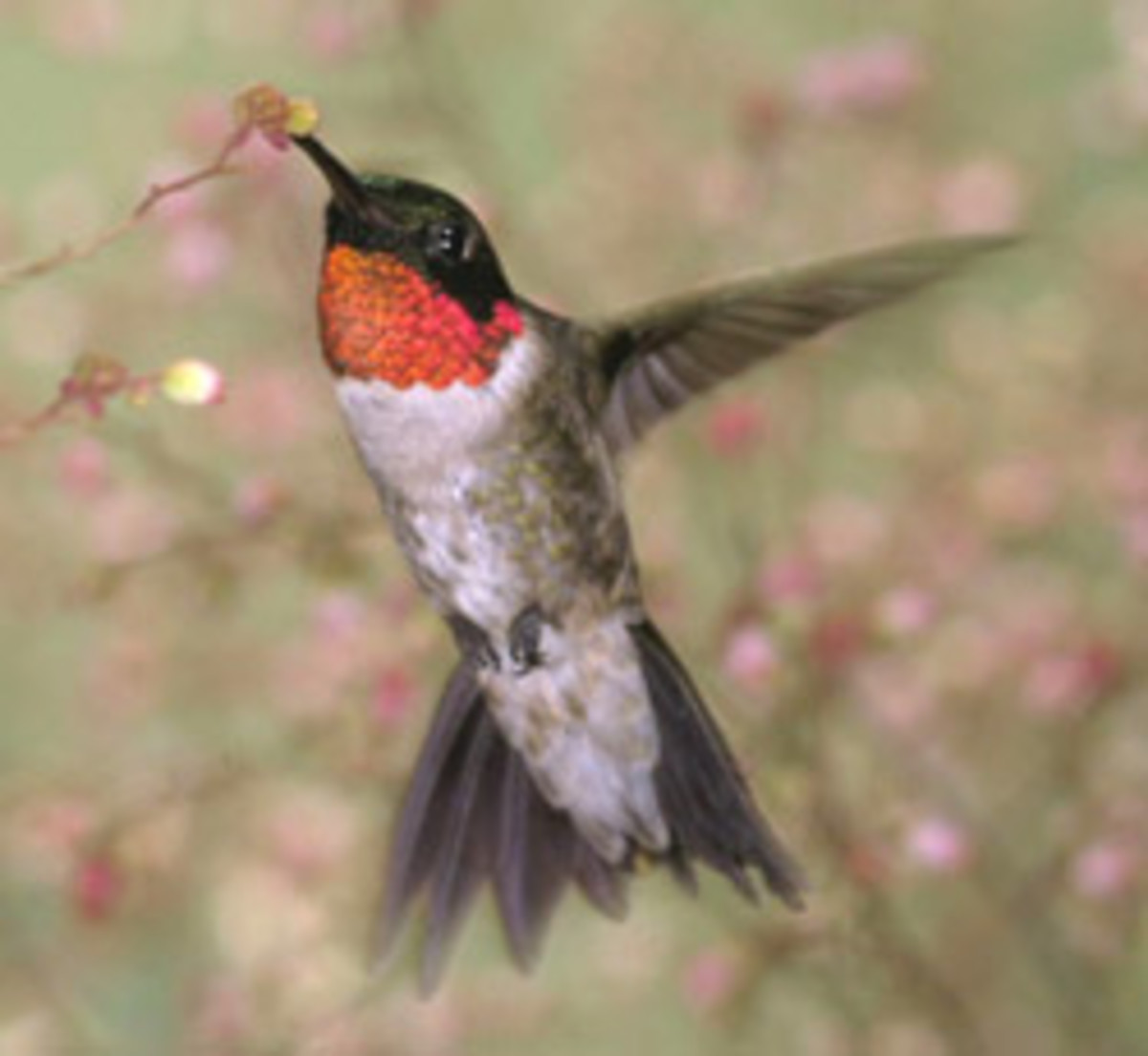Ovenbirds of Ecuador and the Tropical Rainforest

The Ovenbird (Furnariidae ) is a family of avifauna with extremely descriptive and sometimes comical names. The term “Ovenbird” comes from the Spanish word “horno ” that was representative of the oven-like nests built by several of the furnariid species. A common bird throughout Central and South America, it is fascinating to observe whether in the tropical rainforest or high sierra.
All in the Family
Ovenbirds are from a large family within the order Passeriformes or “perching birds”. They should not be confused with the Ovenbird (Seiurus aurocapillus) that is a distant cousin and breeds in North America. Furnariids are insectivores and may be found skulking and foraging from the paramo to the depths of the rainforest throughout the neotropics. There are 235 different species, 78 of these can be found in Ecuador. Woodcreepers (28 species in Ecuador) had been classified as a separate family until recently when DNA evidence has encouraged many to recognize them as a subfamily of the Ovenbird.
Furnariidae are small to medium in length, varying from 9 – 35 cm (3.5 – 14 in) depending on species. Although their family name is derived from the oven-like nests that are constructed by the “Horneros”, most build their nests of sticks or in burrows or clefts in rocks. A few species are striking in appearance but most are very similar in pattern and coloring making it difficult to provide definite identification.
What's in a Name?
With a few exceptions, the English names given to many of the Ovenbirds are very illustrative of their habits and habitats. Titles such as Thistletail, Treerunner, Foliage-Gleaner and Leaftosser leave little doubt to the hunting practices of many birds. A little description of many of these species will help in identification in the field.
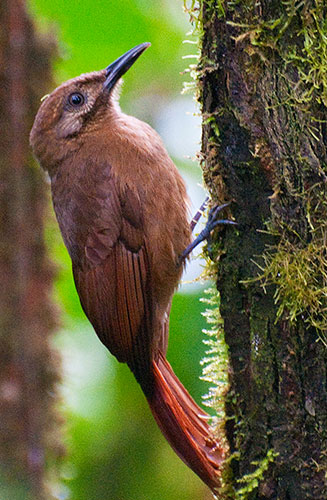
Woodcreepers – A group of birds that is now considered a subfamily of the Furnariids, although this designation is not totally accepted by all. The Woodcreepers are a similar classification of scansorial (adapted to climbing trees) bird with stiff tails that are utilized in scaling trees. They are found primarily in humid and mountain forests. The sexes are alike and the greatest diversity is found along the eastern slopes of the Andes.
Spinetail – A distinctive Ovenbird noted for its double-pointed tail. It can be quite confusing to recognize since many species are similar in appearance and are quite difficult to locate in their dense shrubby habitats. They skulk in the thick lower growth but are very vocal by nature. Their nests are grass globular or ball-shaped structures with a side entrance.
Thistletail – A diminutive, chubby furnariid that inhabits the central valley of the Ecuadorian highlands, generally near the tree line. It has a noticeably long tail that, especially in molting birds, appears longer than its body.
Canastero – A small furnariid of the paramo and shrubby grassland of the high sierra. Their bodies are conspicuously streaked and they have a tiny orange chin patch and a fairly long tail. Their nests, built from dries twigs, are large structures with side entrances. The term “Canastero” is a Spanish word meaning “basket maker”.
Treerunners – A handsome Ovenbird of the Andean forests. It is very similar to the Woodcreepers in that they prowl along lateral branches and navigate up the sides of tree trunks in search of prey. Their moss constructed nests are ball shaped with side entrances.
Foliage-gleaner – These furnariids can be divided into five separate genera:
Syndactyla – A midsized ovenbird residing in the understory of mountain forests. Nests are built in the extremes of tunnels burrowed into banks.
Anabacerthia – A fairly conspicuous foliage-gleaner, two species total with one species found on either side of the Andes. It is small and slender, more arboreal than many other species of the area.
Hyloctistes – Also referred to as Woodhaunters, it is a little seen furnariid of the lower forest growth. Although considered identical to other species, its voice differs considerably. There is one species inhabiting each slope of the Andes.
Philydor – A slender furnariid that inhabits the humid lowland forests. While some are tree dwellers, others favor the denser cover of the lower growth. They tend to be easier to observe than some of their cousins although they are less vocal. Their nests are holes dug into snags or banks.
Automolus – A larger ovenbird of the lower growth. They are generally heard more often than seen so identification tends to be difficult. They are notorious skulkers. Their nests are built at the end of burrows dug into banks.
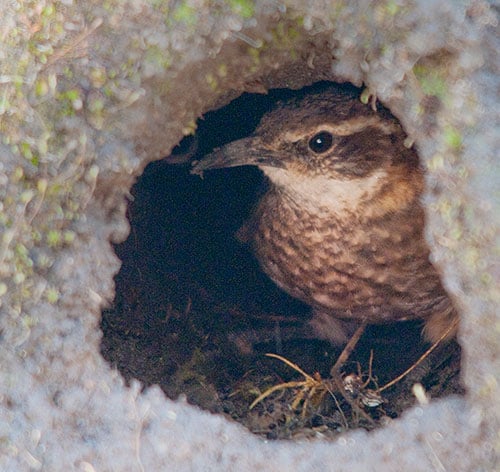
Cinclodes – An Ovenbird of the high sierra, found in open areas and scrub of the paramo particularly near water. There are two species in Ecuador, the Stout-billed and the Bar-winged Cinclodes, often occurring together foraging for insects among the tundra grasses. . Their nests are built in burrows that are excavated from the sides of hills.
Horneros – Group of birds that gave the Ovenbird family its name. The Spanish word “Horno”, which means oven, was used to describe the mud nests they built in the form of old-fashioned baking ovens. These nests are typically placed on posts or atop a horizontal limb. They are a chunky furnariid, similar to a thrush with a distinctive short tail, slender bill and long legs. They are often observed in open or semiopen areas at lower elevations.
Treehunter – Sizable and brawny furnariid with large black bills that inhabit the underbrush of the Andean forests on both slopes. Some species favor bamboo. They are very cautious and difficult to locate. All Treehunters look similar in appearance and are therefore confusing to identify. They build their nests at the ends of burrows dug into banks.
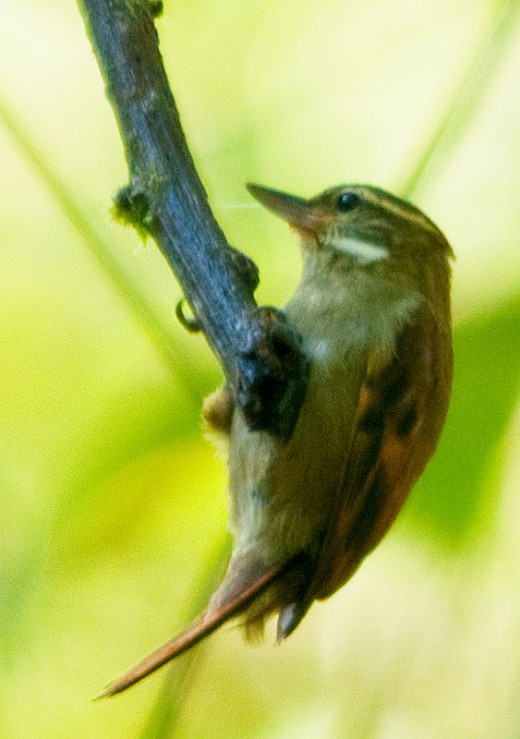
Xenops – A diminutive arboreal ovenbird preferring the humid lowland forests. Most species have an obvious upturned lower mandible and a distinctive malar stripe. They build their nests in small holes dug into rotted wood.
Leaftossers – A dark-plumaged terrestrial furnariid within the humid forests of the foothills and lowlands on both sides of the Andes. Their legs and tails are short while their bills are quite long and slender. The dig long burrows into banks where they build their nests.
Summary
Ovenbirds are a large family of avifauna that haunts the deepest recesses of the tropical rainforest and wooded areas throughout Ecuador. There presence is more often detected by song than by sight. However, the search is well worth the effort in locating these mysterious and illusive birds.
Other Articles by this Author
- Rio Silanche Bird Sanctuary - Tropical Rainforest Re...
White-necked Puffbird (Hotharchus hyperrhynchos) Deforestation has become a bane for the many inhabitants of the tropical rainforests around the world. Although the exotic trees are a boon for the local... - The Tanagers of Ecuador
Blue-necked Tanager (Tangara cyanicollis) Of the 240 traditionally known species of tanagers (Thraupidae ), 143 inhabit the country of Ecuador. Within this heading are included the tanagers, honeycreepers,... - Black-tailed Trainbearer - Hummingbird with an Impre...
Male Black-tailed Trainbearer (Lesbia victoriae) There is so much to see and do in Quito Ecuador because of its World Cultural Heritage Site status. However, there are other encounters while walking the...
Related Links
- The Birds of Ecuador
Articles and photos about the birds of Ecuador - Discovering the Birds of Ecuador
Birding locations in Ecuador


